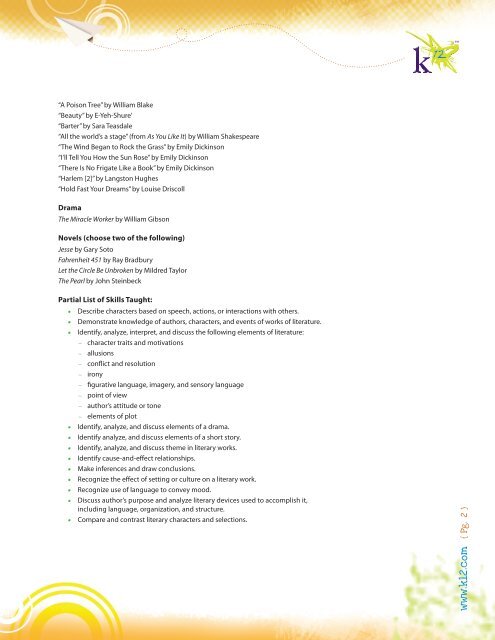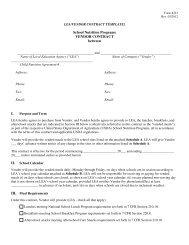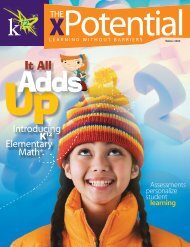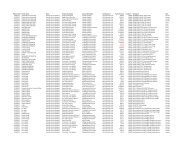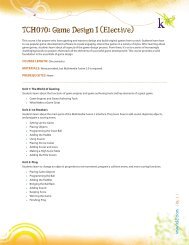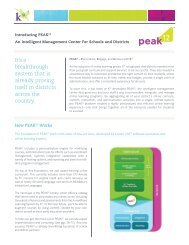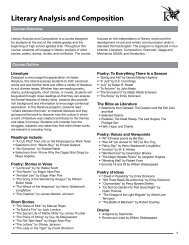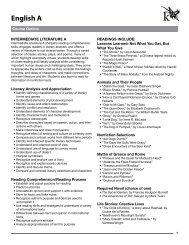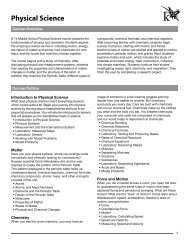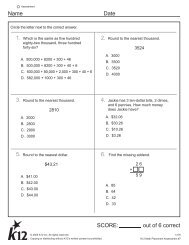ENG206: Literary Analysis and Composition II - K12.com
ENG206: Literary Analysis and Composition II - K12.com
ENG206: Literary Analysis and Composition II - K12.com
- No tags were found...
Create successful ePaper yourself
Turn your PDF publications into a flip-book with our unique Google optimized e-Paper software.
“A Poison Tree” by William Blake“Beauty” by E-Yeh-Shure’“Barter” by Sara Teasdale“All the world’s a stage” (from As You Like It) by William Shakespeare“The Wind Began to Rock the Grass” by Emily Dickinson“I’ll Tell You How the Sun Rose” by Emily Dickinson“There Is No Frigate Like a Book” by Emily Dickinson“Harlem [2]” by Langston Hughes“Hold Fast Your Dreams” by Louise DriscollDramaThe Miracle Worker by William GibsonNovels (choose two of the following)Jesse by Gary SotoFahrenheit 451 by Ray BradburyLet the Circle Be Unbroken by Mildred TaylorThe Pearl by John SteinbeckPartial List of Skills Taught:• Describe characters based on speech, actions, or interactions with others.• Demonstrate knowledge of authors, characters, <strong>and</strong> events of works of literature.• Identify, analyze, interpret, <strong>and</strong> discuss the following elements of literature:– character traits <strong>and</strong> motivations– allusions– conflict <strong>and</strong> resolution– irony– figurative language, imagery, <strong>and</strong> sensory language– point of view– author’s attitude or tone– elements of plot• Identify, analyze, <strong>and</strong> discuss elements of a drama.• Identify analyze, <strong>and</strong> discuss elements of a short story.• Identify, analyze, <strong>and</strong> discuss theme in literary works.• Identify cause-<strong>and</strong>-effect relationships.• Make inferences <strong>and</strong> draw conclusions.• Recognize the effect of setting or culture on a literary work.• Recognize use of language to convey mood.• Discuss author’s purpose <strong>and</strong> analyze literary devices used to accomplish it,including language, organization, <strong>and</strong> structure.• Compare <strong>and</strong> contrast literary characters <strong>and</strong> selections.www.k12.com { Pg. 2 }


